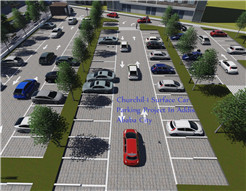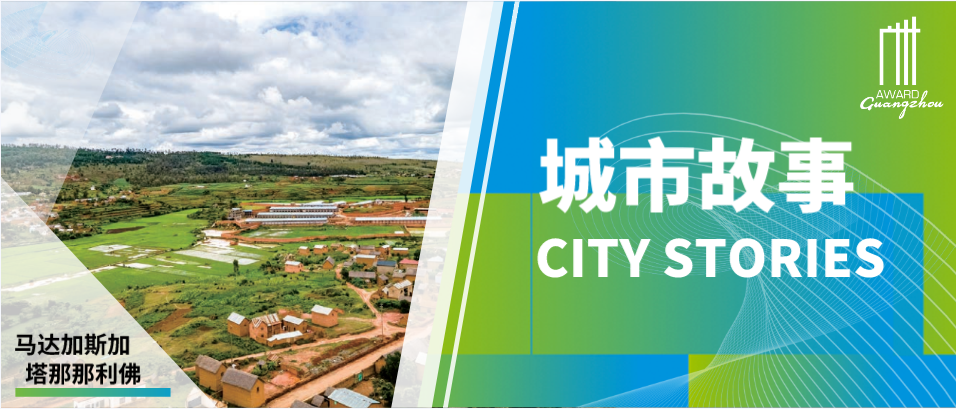Addis Ababa, Ethiopia
Development of Sustainable Transport System

Background Information
The city has an urban transport policy that promotes the expansion of mass and non-motorized transport systems in keeping with pedestrian welfare. It further elaborates the improvement of traffic management practices through the introduction of intelligent transportation systems.
All mega projects are initiated in keeping with the urban transport policy. The city also has a draft road traffic safety strategy. The public transport network planned in 2010 has succeeded in adhering to the structural master plan of the city.
Goals of the Initiative
The initiatives shall increase the accessibility and reliability of the public transport system to all users. Pedestrians shall have a better walking experience and connectivity. It shall create regulated traffic flow and improved traffic safety. Monitoring and controlling capacity of the traffic management agency shall be enhanced.
Parties and Partners to the Initiative
The Transport Programs Management Office officially leads the development of the initiative. The institution works with public sectors such as the City Road and Transport Bureau, the umbrella institution, and is responsible for political leadership and decision making within the sector. There is a further strong public-public partnership among the Traffic Management Agency; Public and Freight Transport Authority; Roads Authority; Sheger Mass Transport Services Enterprise; Anbessa City Bus Enterprise; Vehicle and Driver Accreditation Authority; and Police Commission.
Consultants and contractors are key private sectors involved in the initiatives. For example, private consulting firms are currently preparing the detailed design of the BRT B2 corridor pilot project. The public sector also has a public/community engagement communication plan to work in partnership with the community in the development process of the initiative.
Resources Used for Implementation
Financial and technical resources are and will be used to implement the City initiatives. An 85 million Euro financial resource has been secured from the French Development Agency. A further 192 million USD is secured from the World Bank to finance the intelligent transport system.
The City Administration yearly allocate budgets to develop planned parking facilities, automated parking, open-lot parking, building parking, and underground parking integrated with public space.
The city is currently looking for finance to develop some of the public transport initiatives that are planned for the next five years.
To implement some of the initiatives, the city works with different agencies and multilateral organizations for technical support. This includes the World Bank, AFD, BIGRS and its partners, C-40 and UN-Habitat.
Innovation for the Initiative
The city initiative is revolutionary, but flexible enough to continue evolving over time. It is revolutionary because such an initiative has never been tried before. For example, Bus Rapid Transit, with its full options, is a new phenomenon for the city that will transform the transport service. Furthermore, the ITS initiative is a very important milestone in revolutionizing the traffic management practice of the city. It is planned to evolve to a highly sophisticated system capable of dealing with new developments.
Innovation has been applied in
The innovation is well articulated in the urban transport policy of the city. The initiatives are now under the design phase, and some are already being implemented. Further initiatives have already settled financial arrangements whilst others still need financing.
Obstacles and Solutions for Innovation
Developing additional LRT lines or introducing BRT corridors to the city were one of the most challenging issues which needed decisions besides financial backing and employment of the required skills.
Convincing justifications were presented and discussed among stakeholders whereon it was agreed that development of the BRT network would enhance the service of transport in the city. Additional exposure tours and workshops were subsequently arranged.
In addition to the budget from the City Administration, a loan was secured from international funding agencies. We used available expertise in the city with technical support from funding agencies to overcome technical gaps.
Outcomes and Assessments
Reaching a consensus on the type of public transport system (BRT); securing loans to finance the initiatives; partnerships with established institutions including the Public and Fright Transport Authority, Traffic Management Agency, Driver and Vehicle Permit and Control Authority and BRT operator (Sheger Mass Transport Service Company), which enhance the performance capacity of the Road and Transport Bureau; the starting of the detail design for the 16-kilometer BRT B2 corridor pilot project (about 54,000 passengers are estimated per day in this corridor); Sheger standard buses have started operation. These are some of the achievements.
Methods Applied
A specific project steering committee - with all stakeholders as its members - has been established. The steering committee is instrumental in creating a consensus, conducting continuous assessments and evaluation. The steering committee makes group decisions and takes assignments on their part in order to attain the desired outcomes.
-
 In Focus | The World Earth Day: Planet vs. Plastics
In Focus | The World Earth Day: Planet vs. Plastics -
 Urban Innovation in China | Shenzhen: How to Maintain Momentum to Achieve Carbon Peak by 2030 While Leading Green and Low-Carbon Development?
Urban Innovation in China | Shenzhen: How to Maintain Momentum to Achieve Carbon Peak by 2030 While Leading Green and Low-Carbon Development? -
 City Stories | Antananarivo, Madagascar: Building Resilience in the City Food System
City Stories | Antananarivo, Madagascar: Building Resilience in the City Food System -
 In Focus | International Women’s Day: Building a Women-Friendly City
In Focus | International Women’s Day: Building a Women-Friendly City























 Tel: +86 20 3780 4434
Tel: +86 20 3780 4434 Email: info@guangzhouaward.org
Email: info@guangzhouaward.org Address: Rm 1609, FuLiXinTianDi, No.307 Guangzhou Dadao Zhong, Yuexiu District, Guangzhou, Guangdong, 501600, PRC
Address: Rm 1609, FuLiXinTianDi, No.307 Guangzhou Dadao Zhong, Yuexiu District, Guangzhou, Guangdong, 501600, PRC




